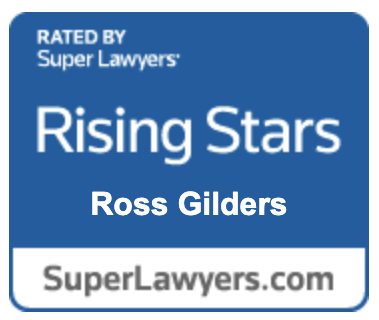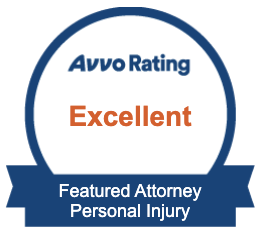A Legal Perspective: Gaylord Slip and Fall Accidents
- Mike Stein

- Aug 8, 2024
- 6 min read
Updated: Jan 17

Slip-and-fall accidents are some of the most common accidents in Gaylord, Michigan. They can occur anywhere — on sidewalks, in parking lots, at the workplace, or even in someone’s home.
These accidents can result in serious injuries such as broken bones, head trauma, and back injuries. In some cases, they can even be fatal for elderly and medically vulnerable individuals.
When slip-and-fall accidents occur, it’s important to understand your rights and options as a victim. If you need guidance to deal with this type of accident, our Gaylord legal expertise can help. Book your consultation today and get an astute and tailored legal strategy for your personal injury case.
The Legal Perspective on Slip and Fall Accidents in Gaylord
Slip-and-fall accidents are a common type of personal injury claim that often falls under the umbrella of premises liability law. Understanding the legal perspective of premises accidents in Michigan involves examining local premises liability law principles and the specific elements that constitute a slip-and-fall accident.
Understanding Premises Liability in Michigan
Premises liability is a legal concept that holds property owners and occupiers responsible for accidents and injuries that occur on their property due to hazardous conditions. This area of law is designed to ensure that properties are maintained in a safe condition to prevent harm to visitors.
Premises liability covers a wide range of scenarios, from slip-and-fall accidents to inadequate security measures that lead to injury. It applies outside residential properties and is also commonly encountered in workplace accidents and commercial property cases.
Examples of Premises Liability Accidents
Premises liability encompasses various types of accidents beyond slips and falls, including:
Trip and Falls: Tripping over uneven surfaces, debris, or other obstructions.
Falling Objects: Injuries caused by objects falling from shelves or other overhead structures.
Inadequate Maintenance: Accidents due to poor property maintenance, such as broken stairs or handrails.
Insufficient Lighting: Falls or injuries resulting from poorly lit areas, making hazards difficult to see.
Is a Slip and Fall Accident Similar to Negligence?
Yes, slip and fall accidents are a subset of negligence claims. In negligence law, the plaintiff must establish that the defendant owed a duty of care, breached that duty, and that this breach caused the plaintiff’s injury.
Slip and fall cases require demonstrating that:
The property owner had a duty to ensure the premises were safe.
The owner breached this duty by failing to address or warn about a dangerous condition.
The breach directly caused the plaintiff’s injury.
The plaintiff suffered damages as a result.
Slip and fall accidents are intrinsically intertwined with the broader concept of negligence, specifically focusing on the property owner’s responsibilities.
What Constitutes a Slip and Fall Accident?
A slip and fall accident involves an individual slipping, tripping, or stumbling due to a hazardous condition on someone else’s property. Some of the elements legal experts would look for to consider a case a valid slip-and-fall accident are:
Hazardous Condition: Wet floors, icy surfaces, loose carpeting, uneven flooring, or hidden obstructions.
Lack of Warning: No signs or warnings informing passersby about the known or anticipated hazard.
Location: The accident must occur on property the defendant owns, controls, or maintains.
Injury: The slip and fall must result in a tangible injury to the plaintiff.
To prove a slip and fall claim, the plaintiff must provide evidence that the property owner knew or should have known about the hazardous condition and failed to take reasonable steps to prevent the accident.
How Local Laws Impact the Adjudication of These Cases
Local laws in Gaylord, Michigan, significantly influence the judgment of slip and fall accident cases. Understanding these legal nuances is crucial for both plaintiffs and defendants involved in such cases.
The Liability for the Accident
As mentioned earlier, premises liability law dictates that property owners and occupiers have a legal duty to maintain their property safely for visitors. The specifics of this duty can vary based on the visitor’s status:
Invitees: Property owners owe the highest duty of care to invitees, such as customers or clients. Owners or caretakers should actively inspect the property and promptly address any hazards. Failure to do so can result in liability for any injuries invitees sustain.
Licensees: Property owners must warn social guests or licensees of any known, non-obvious dangers. If an injury occurs due to a hazard the owner knew about but did not warn the licensee about, they can be held liable.
Trespassers: Property owners generally owe no to minimal duty to trespassers. However, it’s still advisable for owners to put up signs regarding blatant property hazards to avoid legal loopholes.
In slip and fall cases, plaintiffs must demonstrate that the property owner knew or should have known about the hazardous condition and failed to take reasonable steps to rectify it or warn visitors.
The Doctrine of Comparative Negligence
Michigan uses a modified comparative negligence rule where a plaintiff’s compensation can be reduced by their percentage of fault. However, if the plaintiff is found to be 51% or more at fault, they are barred from recovering any damages.
If a plaintiff is partially at fault, their awarded damages will be reduced by their degree of fault. For example, if a plaintiff is found to be 30% at fault for their slip-and-fall accident and the total damages are $10,000, they would receive $7,000.
The Statute of Limitations
The statute of limitations for most personal injury cases, including slip and fall accidents, is generally three years from the accident date.
In some cases, if the injury was not immediately apparent, the statute of limitations may begin from the date the plaintiff discovered it or should have found it with reasonable diligence.
Failing to file a lawsuit within this timeframe typically results in the court dismissing the case, barring the plaintiff from seeking compensation for their injuries.
Understanding the Burden of Proof in Premises Liability
In slip and fall accidents, the validity and strength of proof play crucial roles in determining liability and obtaining compensation for the victim.
Understanding the Burden of Proof
In most civil cases like slip and fall accidents, the burden of proof typically requires the plaintiff to demonstrate that it is more likely than not that the defendant’s negligence caused the injury. This standard, known as “preponderance of the evidence,” is less stringent than the “beyond a reasonable doubt” standard used in criminal cases.
To succeed in a slip and fall case, the plaintiff must establish several key elements, including:
The property owner owed a duty of care to the victim.
The property owner breached this duty by failing to maintain a safe environment or warn of hazards.
The breach of duty directly caused the victim’s injuries.
The victim suffered damages as a result of the accident.
Types of Evidence a Victim Should Keep
Not all evidence is equal; some can significantly push your case forward to a favorable claim, while others can only help your case minimally.
Here are some types of evidence you should keep:
Photographic Evidence: Photos of the accident scene (i.e., the hazardous condition that caused the fall, your injuries, etc.) can provide crucial visual evidence.
Witness Testimony: Statements from witnesses who observed the accident or were aware of the hazardous condition can corroborate the victim’s account.
Medical Records: Documentation of the victim’s injuries, treatment received, and medical expenses can establish the extent of damages suffered.
Incident Reports: If available, incident reports filed by the property owner or manager can provide details about the accident and acknowledgment of the hazardous condition.
Maintenance Records: Records showing the property’s maintenance history can reveal whether the owner knew or should have known about the hazard and failed to address it.
Challenges in Proving a Slip and Fall Accident
Slip and fall accidents are complicated cases with numerous intricacies. If you’re involved in one, here are some problems you could encounter when you file a claim against the negligent property owner:
Lack of Evidence: One of the biggest challenges in slip and fall cases is the absence of clear evidence, especially if the victim did not document the accident or if there were no witnesses.
Defendant’s Defenses: Property owners may argue that they were unaware of the hazardous condition or that the condition was open and obvious, shifting blame onto the victim.
Comparative Negligence: Defendants may attempt to minimize their liability by alleging that the victim was partially at fault for the accident, reducing the compensation owed.
Complexity of Legal Process: Navigating the legal process can be daunting for victims, especially when facing well-funded defendants and insurance companies.
Schedule a Free Consultation Today
While most personal injury cases seem straightforward, dealing with slip-and-fall accidents can be challenging. The legalities regarding who’s liable can be complex, and proving negligence is often difficult.
If you or a loved one has been injured in a slip and fall accident, our experienced Gaylord slip and fall lawyer can help you navigate the legal process and fight for your right to compensation. Contact us today to book your consultation and discuss your case and legal options.









Comments